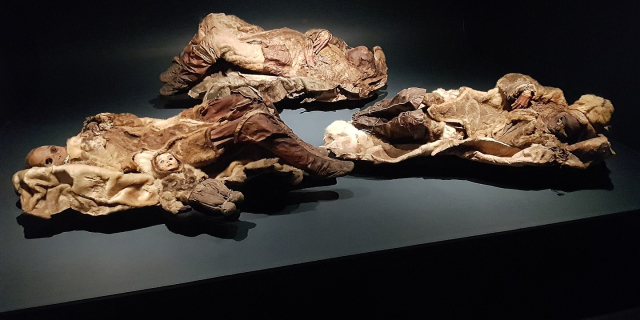Qaqortoq, formerly Julianehåb, is a city in, and the capital of, the Kujalleq municipality in southern Greenland, located near Cape Thorvaldsen. With a population of 3,050 in 2020, it is the most populous town in southern Greenland and the fourth or fifth-largest town on the island.
The area around Qaqortoq has been inhabited since prehistoric times. Beginning with the Saqqaq culture roughly 4,300 years ago, the area has had a continuous human presence.
Saqqaq cultureThe earliest signs of population presence are from roughly 4,300 years ago. While Saqqaq-era sites are generally the most numerous of all the prehistoric sites in Greenland, around Qaqortoq the Saqqaq presence is less prominent,[1] with only sporadic sites and items such as chipped stone drills[2] and carving knives.
Dorset cultureThe Dorset people arrived in the Qaqortoq area around 2,800 years ago.[3] Several rectangular peat dwelling structures, characteristic of the early Dorset culture, can be found around the wider Qaqortoq area.
Norse cultureWritten records of South Greenland history begin with the arrival of the Norse in the late 10th century. The ruins of Hvalsey – the most prominent Norse ruins in Greenland – are located 19 kilometers (12 mi) northeast of Qaqortoq. General or even limited trade between the Norse and the Thule people was scarce. Except a few novel and exotic items found at Thule sites in the area, evidence suggests cultural exchange was initially sporadic. Later, the south Greenland Norse adopted trade with the southern Inuit and were for a time the major supplier of ivory to northern Europe.[citation needed] The Norse era lasted for almost five hundred years, ending in the mid-15th century. The last written record of the Norse presence is of a wedding in the Hvalseyjarfjord church in 1408.[4]
Thule peopleThe Thule culture Inuit arrived in southern Greenland and the Qaqortoq area around the 12th century and were contemporaneous with the Norse. However, there exists little evidence of early contact. The Thule culture was characterized by a subsistence existence and there are few, if any, dwellings of considerable structure to be found from the era. Items, however, are relatively numerous.
Colonial era until present Qaqortoq (Julianehaab) in 1860.
Qaqortoq (Julianehaab) in 1860.
The present-day town was founded in 1775 by the Dano-Norwegian trader Anders Olsen, on behalf of the General Trading Company.[5] The town was christened Julianehaab after the Danish queen Juliane Marie, although it sometimes mistakenly appears as "Julianshaab".[6] The name was also sometimes anglicized as Juliana's Hope.[7] The town became a major center for the saddle-back seal trade[8] and today remains the home of the Great Greenland sealskin tannery.
Until 31 December 2008 the town was the administrative center of Qaqortoq municipality. On 1 January 2009 Qaqortoq became the biggest town and the administrative center of Kujalleq municipality, when the three municipalities of South Greenland, meaning Qaqortoq, Narsaq, and Nanortalik were merged into one municipality.








Add new comment